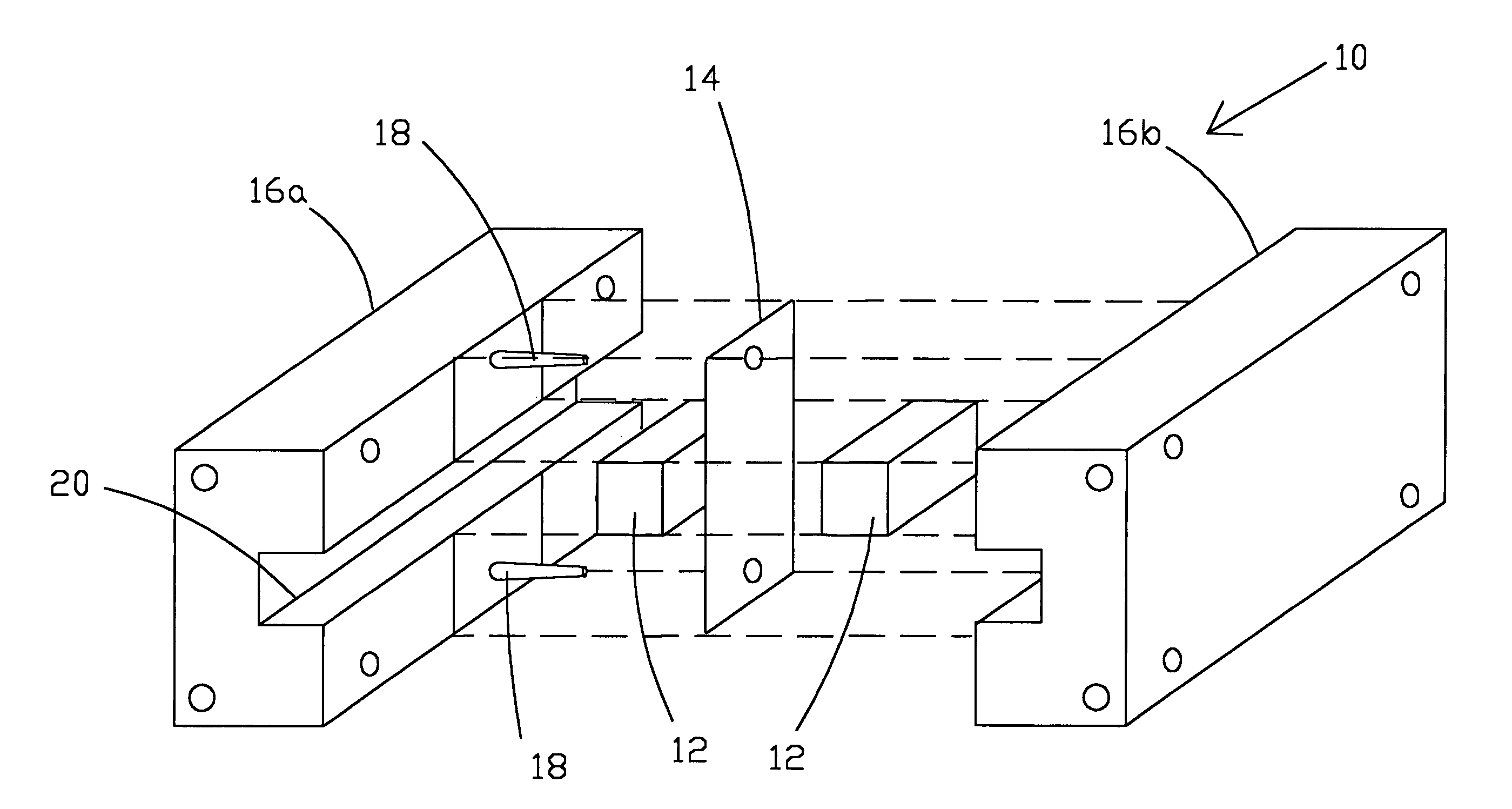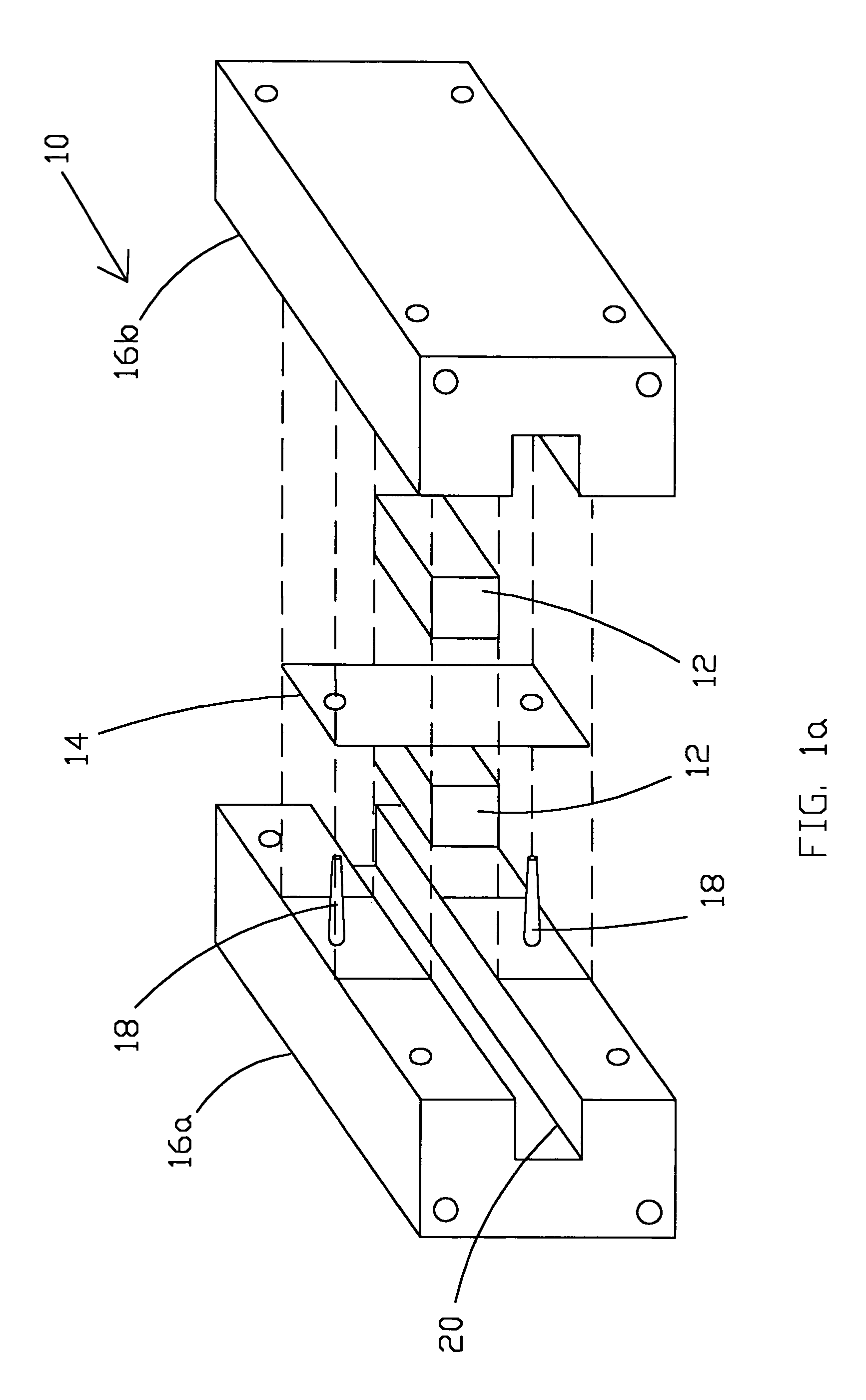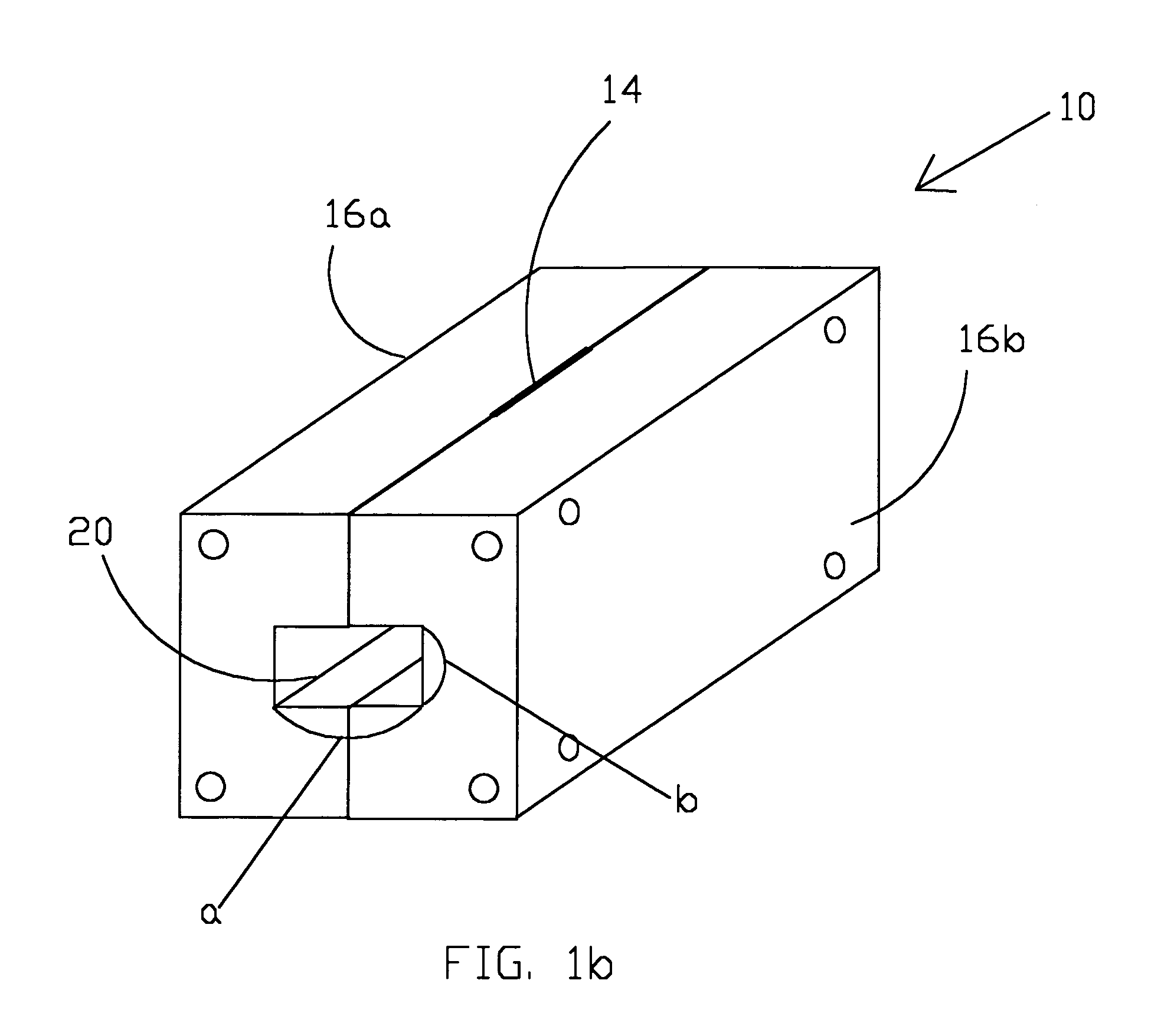Evanescent waveguide apparatus and method for measurement of dielectric constant
a waveguide and dielectric constant technology, applied in the field of waveguides, can solve the problems of not providing an apparatus, not sufficiently informative methods, never being obtained or available in the prior period, etc., and achieve the effects of reducing cross-sectional area, reducing width, and small sampl
- Summary
- Abstract
- Description
- Claims
- Application Information
AI Technical Summary
Benefits of technology
Problems solved by technology
Method used
Image
Examples
Embodiment Construction
[0033]The present invention provides a tool for measuring the dynamic (as opposed to static) dielectric constant of an unknown material in the microwave regime by using only a small sample placed in a cutoff section of a preferably rectangular waveguide. Only a very small sample of the unknown material is required. Because the measurement can take place without the need to build a shielded or anechoic environment, the cost and effort involved in measuring the dielectric constant is reduced.
[0034]It is well known from microwave theory that rectangular waveguides have a lower cutoff frequency below which they cannot propagate a real energy flow. This lowest order cutoff is determined by the width of the waveguide so long as the width, a, is at least twice the height, b:
[0035]fc=c2aɛr(1)
where c is the velocity of light (3×108 m / s), a is the width of the waveguide in meters, andεr is the dielectric constant of the material filling the waveguide. Above this cutoff frequency, the wavegu...
PUM
 Login to View More
Login to View More Abstract
Description
Claims
Application Information
 Login to View More
Login to View More - R&D
- Intellectual Property
- Life Sciences
- Materials
- Tech Scout
- Unparalleled Data Quality
- Higher Quality Content
- 60% Fewer Hallucinations
Browse by: Latest US Patents, China's latest patents, Technical Efficacy Thesaurus, Application Domain, Technology Topic, Popular Technical Reports.
© 2025 PatSnap. All rights reserved.Legal|Privacy policy|Modern Slavery Act Transparency Statement|Sitemap|About US| Contact US: help@patsnap.com



